TL;DR
Designers often advise keeping quality wood cabinets and addressing the floor first. If you must paint, choose a warm white or soft mushroom that complements green countertops and avoids clashing with brown tile. In most kitchens, new LVP or peel-and-stick over dated tile plus updated hardware delivers a bigger visual upgrade than repainting cabinetry.
The real question: repaint cabinets or fix the floor?
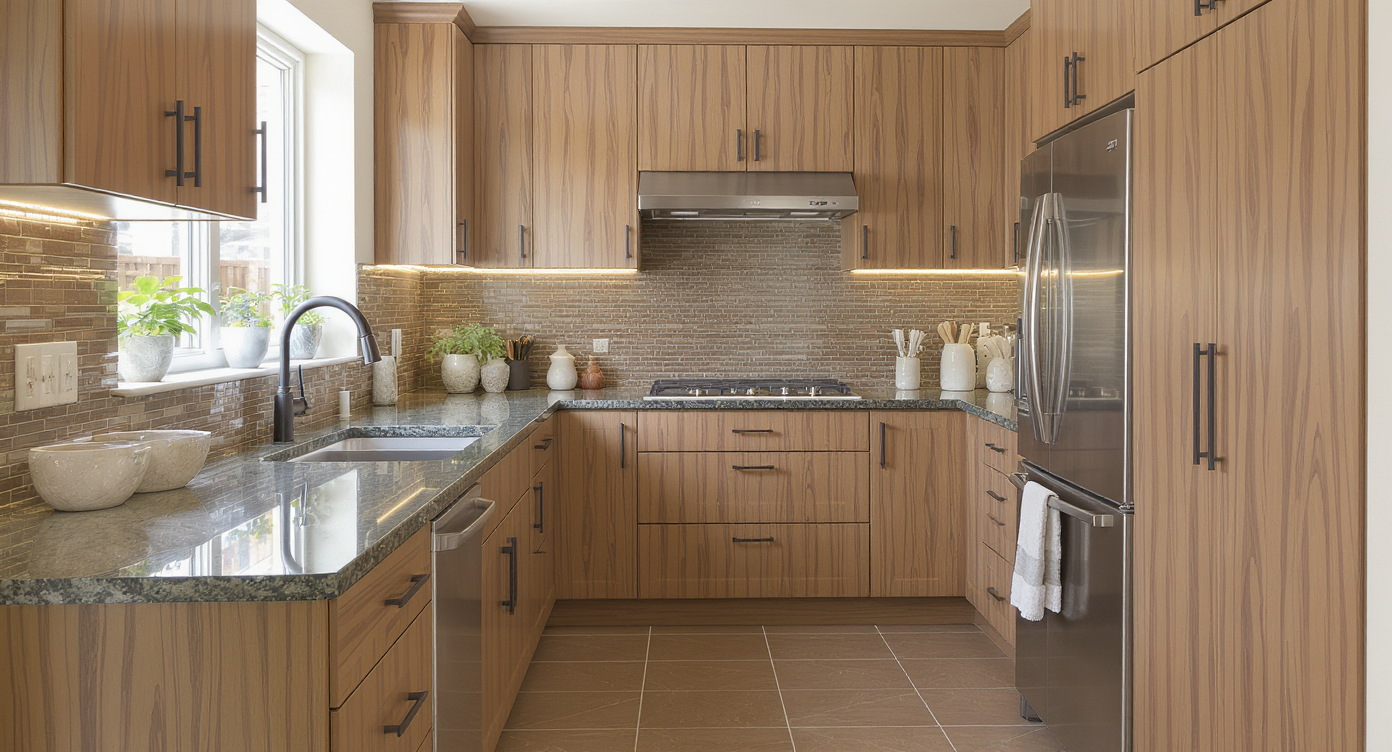
The interplay of green stone, brown tile, and greige cabinetry creates a balanced, sophisticated palette—showing how thoughtful color and material choices shape smart kitchen design.
Here’s the thing: when brown floor tile and a green countertop collide, the cabinets take the blame — even if they’re not the problem. The instinct is to reach for paint. But in many kitchens, the fastest path to “looks new” is underfoot, not on the doors.
If your cabinets are solid wood or a high-quality veneer, experts recommend keeping them and redirecting the budget to flooring, backsplash, lighting, and hardware. Those changes correct undertone clashes and modernize the room without risking a difficult cabinet paint job. If the doors are thermofoil (a vinyl wrap on MDF), painting is risky; it tends to peel and telegraph texture unless you fully strip and refinish.
So what’s the best cabinet color with brown tile floors and green countertops? Short answer: a warm, creamy white or soft mushroom-beige greige usually outperforms stark white, and a wood finish can be stunning if you balance the floor. Let’s map your options by impact, cost, and durability.
Direct answer: the best cabinet color with brown tile and green countertops
For most kitchens, keep the cabinets and correct the floor first; if painting, choose a warm white (LRV 70–82) or a soft mushroom greige that bridges green counters and brown tile.
- Keep wood, fix the floor: When floors are the visual outlier, new surface flooring (floating LVP at 4–6 mm thickness or quality peel-and-stick vinyl tiles) changes the read of the entire kitchen. A quiet oak, walnut, or stone-look in a neutral brown/gray instantly harmonizes green counters and existing cabinetry.
- If painting is the plan: Aim for warm white (creamy, not blue) or mushroom greige with subtle green undertones. These colors neutralize brown tile and echo the countertop without going cold. Experts often cite off-whites like “Swiss Coffee”–style shades or mushroom tones in the LRV 55–70 range to avoid stark contrast with dark floors.
- A bold alternative: Deep olive or bottle green lower cabinets with warm white uppers can look bespoke with green countertops when the greens differ by 2–3 steps in depth. Keep hardware dark bronze or soft black to ground the palette.
- Hardware and backsplash matter: A clean white or off-white backsplash (matte 2x8 or 3x6) and new pulls in 3 in or 96 mm center-to-center spacing will modernize the whole space for a fraction of a repaint.
User insight: many homeowners find that adding a long runner (2.5x8 to 2.5x10) that picks up the countertop’s green immediately de-emphasizes problem tile while you plan a floor update.
Anecdote
A homeowner with brown tile and a bottle-green counter kept their wood cabinets, added a linen-colored subway backsplash, and ran a 2.5x10 olive runner down the galley. Two small tweaks, and the kitchen went from chaotic to calm without a single paint can opened.
Common mistakes when pairing cabinet colors with brown tile and green counters
Choosing a stark gallery white is the top misstep; it fights brown tile and amplifies green in the worst way.
- Painting when the floor is the issue: Repainting cabinets is heavy lifting. Changing the floor or visually covering it often has a bigger payoff with less risk.
- Ignoring undertones: Brown tiles frequently skew peach or red; pair them with cream or mushroom that has a touch of yellow or green, not cool blue-white.
- Overlooking cabinet material: Thermofoil doors don’t hold paint well without full stripping. A quick test: if the “wood grain” wraps seamlessly over edges and rails, you likely have foil. In that case, swap hardware and update floors instead of painting.
- Too many patterns: Busy tile + heavily grained counters + ornate hardware = visual noise. Keep two surfaces quiet and let one lead.
- Wrong hardware scale: Tiny knobs on long drawers look dated. For drawers 24–30 in wide, choose 6–8 in pulls to visually stretch the line.
Pro tips to make green countertops and brown flooring look good
Start by bridging undertones with one calm, connective surface — floor or backsplash — then layer lighting and hardware for polish.
- Flooring first, if possible: Floating LVP over tile is a weekend project for many DIYers. Look for attached underlayment and click-lock edges; plan for 5–10% overage. A neutral wood-look in medium tone hides crumbs and warms green counters.
- Peel-and-stick with grout lines: Higher-quality vinyl tiles with printed grout deliver a convincing stone look. Choose 12x24 in formats in slate or limestone tones; lay them in a simple offset for a modern read.
- Backsplash reset: A matte white or warm white subway with 1/16–1/8 in grout in soft gray cleans up visual clutter. It also brightens green counters without making the room feel cold.
- Hardware refresh: Swap old pulls for slim bars in soft black, brushed nickel, or warm brass. Mixing metals is fine — keep to two finishes and repeat each at least twice.
- Lighting and glass: Replace a fussy fixture with a simple dome or linear LED over the sink, 2700–3000K. If you have patterned cabinet glass, trade it for clear or reeded to update instantly.
- If you do paint: Use a bonding primer, spray application for doors, and enamel topcoat. Aim for 2–3 thin coats, light sand between, and allow 7 days cure before heavy use.
Image alt text and captions to use if you post progress: “Warm white kitchen cabinets with green countertop and brown floor, updated with black hardware” and “Budget kitchen refresh with runner rug and peel-and-stick tile over brown ceramic.”
Real-world makeovers on a budget
Small swaps can buy time and dramatically improve the look while you save for bigger changes.
- The runner fix: A homeowner with a similar palette pulled a 2.5x10 washable runner in olive and cream through a galley kitchen. The floor receded, the wood looked intentional, and the green counter suddenly felt custom.
- Hardware + light lift: Another client replaced dated pulls with 6 in matte black bars and swapped a busy glass insert for clear. With a new 3000K LED over the sink, the space looked five years newer in an afternoon.
- Interim floor cover: One family floated 5 mm oak-look LVP over tile while saving for a full reno. The quiet plank pattern united the wood cabinets and green counters; two years later, it still looked crisp.
- Painted floor experiment: A renter liquid-sanded old sheet flooring, primed, rolled porch-and-floor paint, and sealed with water-based poly. It held up for several years, proving paint can be a viable stopgap in low-moisture kitchens.
Takeaway: each story solved the clash by calming the floor first; paint became optional, not urgent.
Tools, inspiration, resources:
- Create a quick mood board and test swatches on poster board next to the floor and countertop.
- Order peel-and-stick tile or LVP samples; check them in morning and evening light.
- Use ReimagineHome to visualize warm white vs mushroom cabinets and alternate floors against your actual kitchen photo.
Suggested image alt text: “Mushroom cabinet color with green countertop and neutral LVP flooring in a small kitchen.”
Visualization Scenario
Imagine your same kitchen, but the floor reads as a quiet, warm wood. The green countertop suddenly feels artisan, the cabinets glow, and a slim black pull ties it all together. That’s the power of neutralizing the base — everything above looks intentional.
FAQ: cabinet color, brown tile floors, and green countertops
What is the best cabinet color for brown tile floors and green countertops?
The most forgiving choices are warm white or soft mushroom greige, which bridge green countertops and brown tile without turning cold. Designers often recommend off-whites with gentle yellow undertones to harmonize warm floors.
Should I paint kitchen cabinets or keep wood cabinets with green countertops?
Keep quality wood cabinets and update flooring, backsplash, hardware, and lighting first for the biggest impact. Painting is best reserved for damaged finishes or when material quality is low.
Can peel-and-stick floor tiles work in a kitchen over ceramic tile?
Yes, higher-quality vinyl tiles with built-in grout lines can last several years when installed on a clean, level surface. Choose 12x24 tiles and roll firmly; they’re a good interim solution until a full floor replacement.
What hardware color works with green countertops and brown floors?
Soft black, oil-rubbed bronze, or brushed nickel hardware grounds the palette and modernizes cabinets. Use 3 in or 96 mm pulls for doors and 6–8 in pulls on wider drawers for balanced scale.
How do I know if my cabinets are thermofoil and hard to paint?
If the faux wood grain wraps seamlessly over edges and rails, it’s likely thermofoil on MDF. These doors are difficult to repaint cleanly; swap hardware and update floors instead of painting.
What to do next
If you love your cabinets even a little, keep them. With brown tile floors and green countertops, the smartest move is to calm the floor and simplify the backdrop. Warm whites or mushroom tones beat stark white, but most kitchens won’t need paint after the floor, backsplash, hardware, and lighting align.
Start small: a runner, new pulls, and a cleaner backsplash. If the itch to paint remains, sample large boards in warm white or soft greige and live with them for a week. And when you want to see every option side by side, drop your photo into ReimagineHome and try on colors and floors before you lift a brush.
.svg)

.svg)
.jpg)

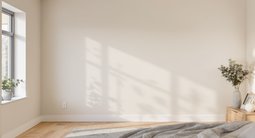
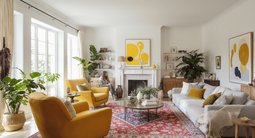


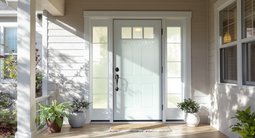

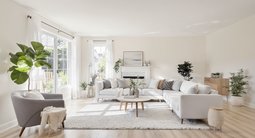

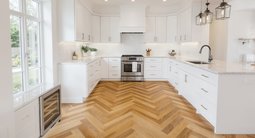



.png)